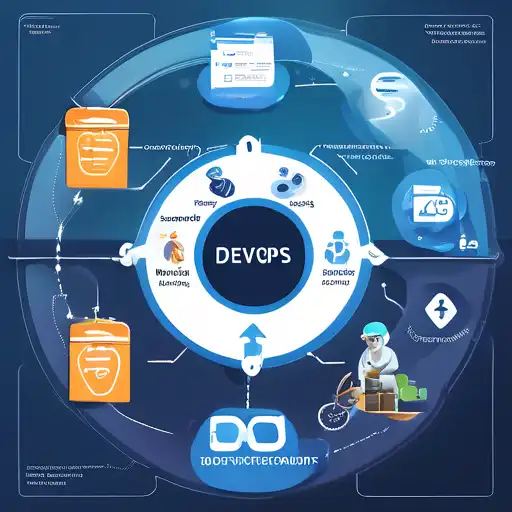Introduction to DevOps in Software Development
DevOps has revolutionized the way software is developed, deployed, and maintained. By bridging the gap between development and operations teams, DevOps practices ensure a smoother, faster, and more efficient software development lifecycle (SDLC). This article explores the pivotal role of DevOps in enhancing the SDLC, focusing on its benefits, key practices, and how it fosters collaboration and innovation.
The Benefits of DevOps in the SDLC
DevOps brings numerous benefits to the software development lifecycle, including improved collaboration, faster deployment times, and higher quality products. By integrating development and operations, teams can identify and resolve issues more quickly, leading to a more agile and responsive development process.
- Continuous Integration and Continuous Deployment (CI/CD): Automates the software release process, enabling frequent and reliable updates.
- Improved Collaboration: Breaks down silos between teams, fostering a culture of shared responsibility.
- Enhanced Efficiency: Streamlines workflows, reducing manual errors and speeding up delivery times.
- Greater Scalability: Supports scalable infrastructure management, accommodating growth and changes in demand.
Key DevOps Practices for Optimizing the SDLC
To fully leverage the advantages of DevOps, teams must adopt certain key practices. These include automation, continuous monitoring, and infrastructure as code, among others. Each practice plays a critical role in optimizing the SDLC for better performance and outcomes.
Automation
Automation is at the heart of DevOps, eliminating repetitive tasks and reducing the potential for human error. From code integration to testing and deployment, automation ensures consistency and efficiency throughout the development process.
Continuous Monitoring
Continuous monitoring allows teams to detect and address issues in real-time, ensuring the reliability and performance of applications. This practice is essential for maintaining high-quality standards and user satisfaction.
Infrastructure as Code (IaC)
IaC enables teams to manage and provision infrastructure through code, improving consistency and reducing setup times. This practice is crucial for achieving scalable and repeatable environments.
How DevOps Fosters Collaboration and Innovation
DevOps is not just about tools and practices; it's also about culture. By promoting collaboration between development and operations teams, DevOps encourages a more innovative and efficient approach to software development. Teams that embrace DevOps principles are better equipped to respond to changes, experiment with new ideas, and deliver value to customers more quickly.
For more insights into optimizing your development process, explore our guide on implementing CI/CD pipelines.
Conclusion
DevOps significantly improves the software development lifecycle by enhancing collaboration, increasing efficiency, and enabling continuous delivery. By adopting DevOps practices, organizations can achieve faster time-to-market, higher quality products, and greater customer satisfaction. As the software development landscape continues to evolve, DevOps will remain a key driver of innovation and success.
